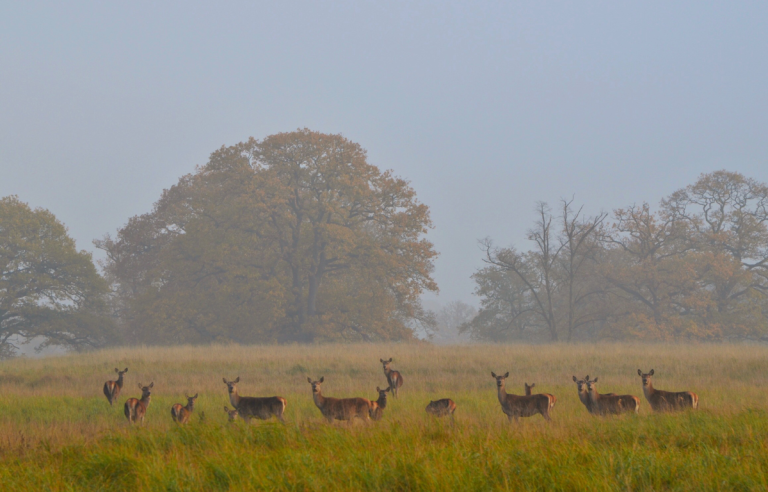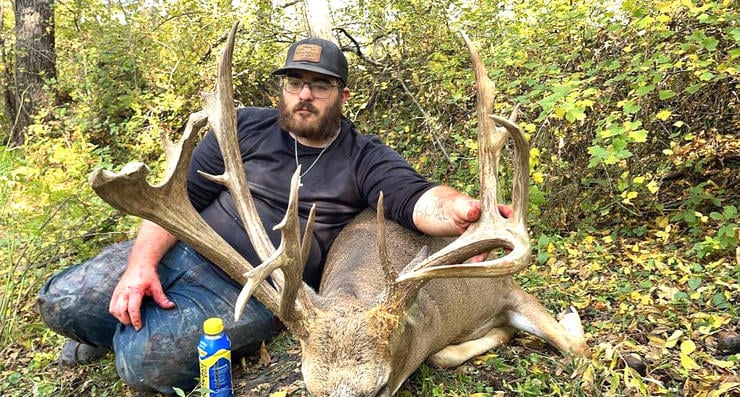What Is Zombie Deer Disease? Chronic Wasting Disease Explained.
Have you heard about “zombie deer” in the news and wondering what they are? We know the answer!
In this article, we’ll look at what a “zombie deer” is and how it can affect the health of the deer and what we are doing about it.
What is zombie deer disease?
Zombie deer, also known as “zombie deer disease” or chronic wasting disease (CWD), is an infectious neurological disease that affects members of the deer family, including elk and moose. It is caused by a prion, which is an abnormal version of a protein that leads to the death of brain tissue.
Do you want to learn more about zombie deer disease and where the name came from? Keep reading below!
Is Chronic Wasting Disease contagious?
CWD is highly contagious, with deer-to-deer transmission occurring through contact with infected bodily fluids such as saliva, feces, and urine. It is also believed that the disease can spread through the air and soil.

Chronic Wasting Disease is on top of wildlife managers priority list due to its spread over the years. It is now detected in almost 30 US states including: Alabama, Arkansas, Colorado, Idaho, Illinois, Iowa, Kansas, Louisiana, Maryland, Michigan, Minnesota, Mississippi, Missouri, Montana, Nebraska, New Mexico, New York, North Carolina, North Dakota, Ohio, Pennsylvania, South Dakota, Tennessee, Texas, Utah, Virginia, West Virginia, Wisconsin and Wyoming.
What are the signs and symptoms of Chronic Wasting Disease in deer?
Chronic Wasting Disease can be difficult to detect, as initial signs may be subtle. Symptoms include weight loss, listlessness, excessive thirst and urination, drooling, and aggression. In later stages, the deer may become emaciated and very weak, display strange behavior, and eventually die. CWD is fatal to deer, and there is no known cure. Once they have the disease, they will not recover.

What are wildlife biologists and the government doing to stop chronic wasting disease?
The spread of CWD is of particular concern to wildlife biologists, hunters, and other outdoor enthusiasts. If left unchecked, the disease could decimate deer and other wildlife populations, as well as the hunting industry, which relies heavily on deer for revenue.

The United States Department of Agriculture and state wildlife agencies are actively researching CWD, as well as implementing measures to reduce the spread of the disease. These measures include testing for the disease in deer, prohibiting the movement of live deer or deer carcasses from infected areas, and implementing carcass disposal regulations. Hunters are advised to avoid handling or consuming meat from deer with CWD.
When was Chronic Wasting Disease discovered?
In 1960s, CWD was first discovered in captive mule deer at a research facility in Colorado. It was then found again in the wild for the first time in 1981.
Can humans get infected with Chronic Wasting Disease?
There have been no reported cases of humans becoming infected with Chronic Wasting Disease. It is possible some primates such as monkeys can get infected by coming in contact with fluids or eating meat from infected deer.
Despite the steps being taken to control the disease, the future of “zombie deer” and chronic wasting disease in deer is uncertain. CWD is a serious threat to deer, other wildlife, and the hunting industry, and it is important that all stakeholders work together to reduce the spread of the disease. Education, research, and regulations are key to control the spread of chronic wasting disease and protect our wildlife.








